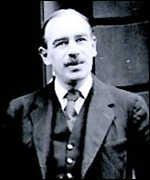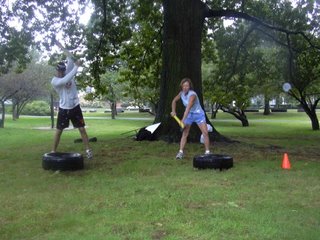Learning the Hard Way
The student-teacher relationship is complicated. Knowledge flows in innumerable directions—teacher to student, student to teacher, teacher to teacher, student to student.
The source of authority is blurred as these flows spin into a web of setbacks and improvements. As the student and teacher learn from each other, each experiences psychological and physical gains that would not occur in the absence of the relationship.
Allowing this process to follow its natural course has given me some preliminary insight into one of the basic tenets of strength training.
This morning, two of our athletes were working toward a one-rep maximum, cranking out heavy thrusters. We started with a five repetition set, using a 115-pound bar to prime the movement. I was slightly aloof as Leo and Mike went through the set, observing but not absorbing.
Despite their previous demonstrations of strength, each athlete struggled to push the bar overhead. I immediately fell back to my stock lifting speech:
“Use the legs to power the press! This is not a segmented movement. You need to transfer the power from hip extension to the upper body. This is not a press! Snap the hips open faster!”
We loaded 135 on the bar for a three-rep attempt. Mike gripped the bar and pushed it overhead twice, failing on the third lift. He scrambled to get under the load as he went to lockout on each attempt. The bar was four or five inches behind his midline, pulling him backward and off-balance. Leo jumped on the bar, exhibiting the same shaky form and exaggerated lockout. He made two lifts before failing, dropping the bar to the rubber mat.
As I cleaned the bar back to the rack, I started preaching, intent on remedying the shortfall.
“Tension is extremely important. You need to grip the hell out of the bar. Rigidity in the shoulder girdle is going to help you get that bar overhead. Take a deep breath, and hold it.”
I turned to Mike.
“Get f*ckin’mad. Let your eyes bulge. Get pissed at the bar. Hell, when you fail, you have a reason to be mad. Get angry.”
Mike got mad, and the tension came immediately. He racked the bar to his chest, totally solid from head to foot. He pushed out the two required reps, slamming 135 overhead easily.
“I could’ve done another one,” he said, grinning.
Leo followed his example, making the lifts with strength to spare. Based on their effort, I added nickels to the bar, bringing the total to 145 for the first one-rep attempt.
After such a stunning turnaround at 135, I was surprised when both guys failed to put it up. Once again, the hip extension lacked force, the extra tension limiting the athletes rather than propelling them to PRs.
Blaming a lack of rest between attempts, I gave Leo and Mike several minutes to rest, reemphasizing the need to transfer power and maintain tension. As Mike set up on the bar for his second attempt at 145, he was visibly shaken. The fury was gone from his eyes as he began his lift, the bar high across his chest.
He dipped into the squat and drove upward, getting the bar just over his head before failing to lockout. During this attempt, I noticed his grip, hands two inches outside shoulder-width.
Suddenly, the light bulb went off.
By reverting to stock lifting advice, I’d failed to notice a simple solution to a complicated problem. The transfer of power wasn’t failing because of tension or hip extension—-it was failing because of structural flaws.
In any overhead lift, power generation comes from the legs and hips, traveling through the core, and ending with a full lockout overhead. If the athlete is not perfectly aligned, some of that power is lost. The feet must be directly under the hips and the hips directly under the shoulders, creating an efficient path to facilitate power transfer. This path must continue through the arms, the elbows as close to the body as possible, aligned directly under the wrists.
If this alignment is achieved, power will move from the lower body to the torso to overhead with minimal reduction.
I moved Mike’s grip inward, putting his wrists over his elbows. We pulled the 5s off the bar, bringing the weight down to 135. Mike made the lift, exhibiting near-perfect form and crisp movement.
Training is a never-ending process. There is always something to learn, something to improve. The same can be said for teaching—-it is a continual evolution of trial and error, a journey of interaction and reflection. Improvement is predicated on looking outside of our current toolbox, seeking solutions that are not immediately obvious.
I’d spent a good part of our morning session rehashing old advice. Mike and Leo heard the same speech three times-—tension and hip extension, tension and hip extension, tension and hip extension. While these points are certainly valid, they were not responsible for the failed lifts. The cause was outside my narrow view, and I had to watch the guys do twelve lifts before it dawned on me.
To help Mike and Leo, I had to reject my assumptions as to the source of the problem. I was looking at symptoms rather than causes, telling them to stop drinking the water rather than remove the water fountain.
Never again will I assume I know the answer before I've examined the problem. Next time, the speech goes: "Structure, tension, hip extension!"
Today, I learned more than I taught, and I'm sure it won't be the last time.
Go faster!



















































